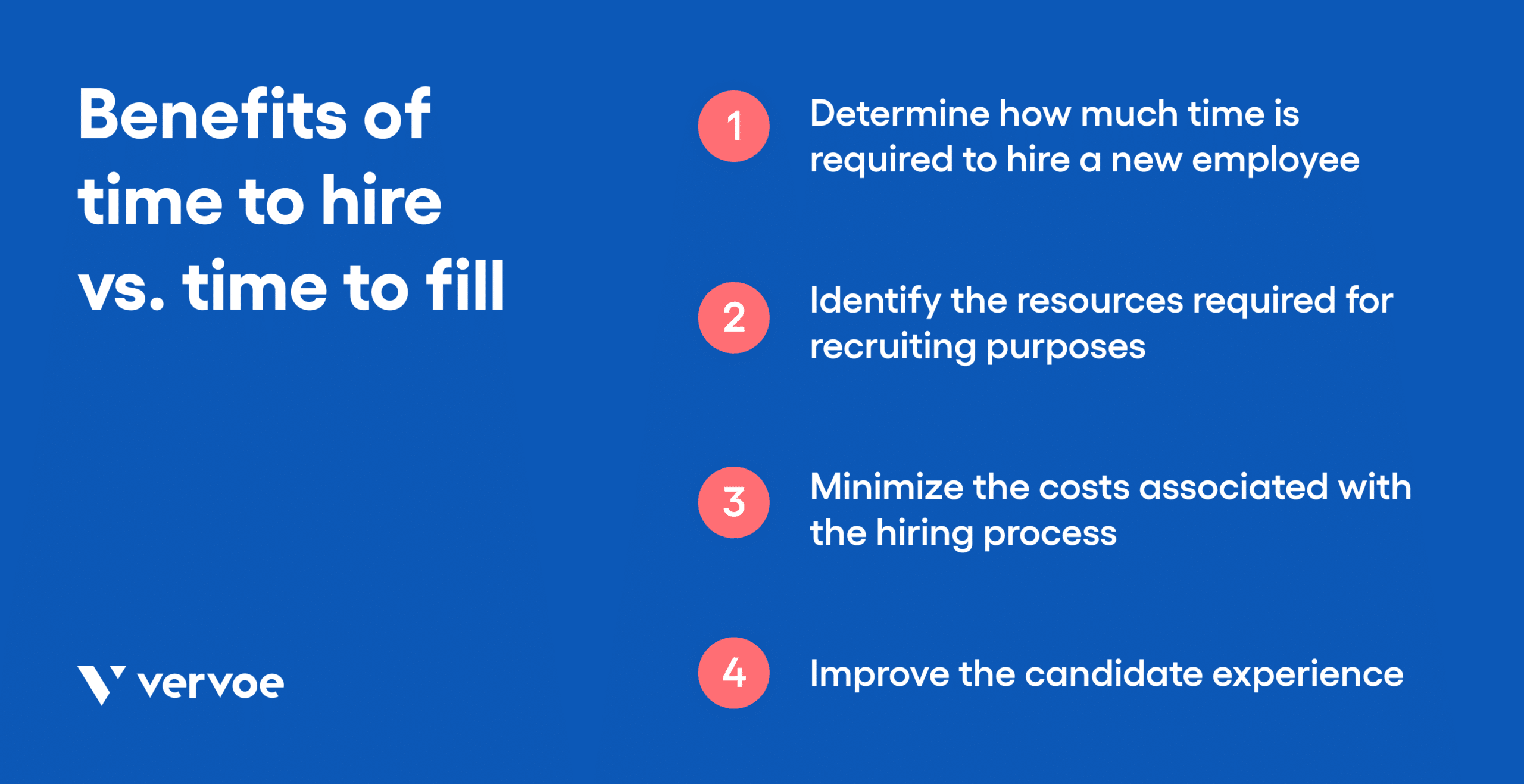Time to fill is an important KPI for recruiters. Knowing this detail helps spot inefficiencies in current hiring methods, avoiding the loss of candidates to competitors. This article will discuss what time to fill means, how to calculate it, the average time to filling, and how to reduce it.
What is Time to Fill?
Time to filling is the number of days it takes to fill a job vacancy. The starting point can be when you submit a job requisition for approval or when the job order is approved. The endpoint is when the candidate accepts the job offer.
Analyzing your time to filling helps determine recruitment inefficiencies, such as:
- Which recruitment phase can be automated (e.g., using chatbots on your career website to answer repetitive initial questions).
- Which sourcing strategy attracts fewer candidates (e.g., filling roles faster using employee referrals than hiring a staffing agency).
- Which recruitment channel costs more money (e.g., advertising on LinkedIn versus job boards).
To compute your time to fill, divide the total number of days from job requisition approval to job offer acceptance by the total number of hires.
Is Time to Fill the Same as Time to Hire?
Time to fill and time to hire are both essential for tracking recruitment speed and quality. However, they are different:
- Time to fill starts from the job requisition approval.
- Time to hire starts from the candidate’s application date. Both end when the candidate accepts the job offer, but time to hire is shorter as it starts later in the process.
What is the Average Time to Fill?
The average time to fill is calculated by adding the total days taken to fill each position and dividing by the number of hires. For example, if hiring a structural engineer, an architect, and a mechanical engineer took 30, 40, and 50 days respectively, your average time to filling would be (30 + 40 + 50) / 3 = 40 days.
Exclude recurrent job openings from your calculations to avoid inflating your average time to fill. Track time to filling internally and monitor it quarterly or yearly for improvements.
What Does a Long Time to Fill Mean?
A long time to filling indicates delays in filling roles. This varies by industry and organization size. For example, the tech and healthcare industries, with high talent shortages, experience longer times to fill compared to sectors like manufacturing or construction.
Monitoring your time to filling helps optimize recruitment cycles, improve handover and onboarding procedures, and create contingency plans for vacant roles. It also impacts business planning, productivity, sales, and profitability.
How to Reduce Time to Filling
Filling vacancies quickly saves time and money. Here are some strategies:
Create a Talent Pool
- Reduce job advertising costs and sourcing time with a database of qualified candidates.
- Include sourced candidates, new graduates, former employees, and underrepresented groups.
Establish Employee Referral Programs
- Candidates hired via referrals perform better and stay longer.
- Offer incentives like cash bonuses or gift cards to employees who refer successful candidates.
Continuously Source Candidates
- Engage passive candidates even when not hiring.
- Use platforms like GitHub for developers or Triplebyte for engineers.
Use Technology to Automate Recruitment
- Automate repetitive tasks with recruitment software to shorten the hiring process.
- Tools like recruitment marketing platforms, candidate texting, and video interviewing software can help.
Review Hiring Process for Delays
- Identify and eliminate roadblocks in your hiring process.
- Streamline steps like resume screening, interviews, and reference checks.
Reinforce Employer Brand
- Attract good-fit candidates by managing your employer brand.
- Conduct brand audits, address negative feedback, and share employee testimonials.
Engage with Regular Emails and Newsletters
- Capture potential candidates’ contact information to keep in touch.
- Send helpful and promotional emails to maintain engagement.
Offer Valuable Content
- Provide resources that showcase your company’s values and culture.
- Create lead magnets like ebooks, guides, and checklists to attract candidates.
Impact of Time to Fill on Recruitment Strategy
Understanding and managing your time to filling can significantly impact your recruitment strategy. A prolonged time to fill may indicate inefficiencies or a misalignment between job requirements and candidate availability. Addressing these issues can enhance your overall recruitment strategy, leading to better candidate experiences and improved organizational performance.
Key Metrics to Monitor Alongside Time to Fill
While time to filling is a critical metric, it’s essential to monitor other related metrics to get a comprehensive view of your recruitment process. Key metrics include time to hire, cost per hire, and candidate quality. By tracking these alongside time to fill, you can gain deeper insights into the effectiveness and efficiency of your hiring practices.
Conclusion
With the ongoing talent war and candidate-driven market, tracking and measuring time to fill is crucial. This metric helps organizations evaluate and improve their hiring process to meet business goals by employing the best talent as quickly as possible.
